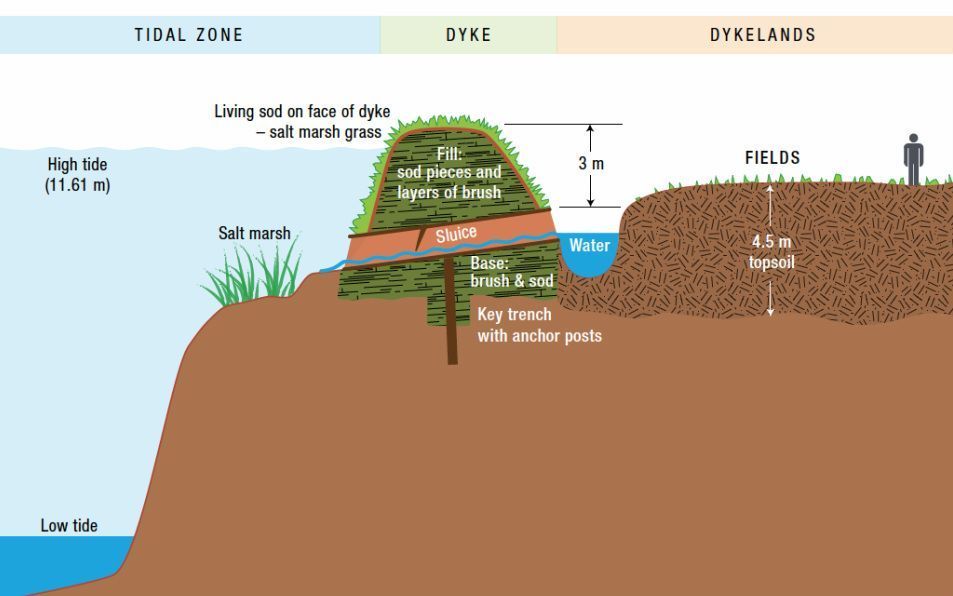I just dropped in to see what’s new and if things here have improved (they haven’t) and wondered what might constitute ‘proven / documented’ in this thread. I take it from the OP and recent posts that emphasis might be placed on the historical, so I thought I might throw into the mix something from one of my books that may be of historical interest (to some) in the context of Oak Island.
Of the original Acadian settlements the nearest to Oak Island, La Have, was founded in 1632. One contemporary author, Nicolas Denys, in his book
Description of North America tells of a journey into Mahone Bay some time before 1635. He writes:
“Leaving La Haive, and having rounded Cape Doré about a league, one enters the bay of Mirlingaiche [Lunenburg] which is about three leagues in depth, and filled by many islands ... we went right to the head of this bay, where we found some ... fine islands filled in part with great oaks.”
Denys was heavily involved in the lumber trade, operating two timber yards. He observes that the red oak was of no value for shipbuilding. It was his business to know the suitability of different types of wood, what timber was available and where it might be found. The above account is uncompromising. It reports a number of islands part-filled with oak trees in Mahone Bay, not just one (
plusieurs autres belles Isles remplies en partie de grands chesnes.)
Had there been more than one oak-bearing island in the bay at that time then the early settlers must have denuded all but Oak Island. Denys was writing some twenty-five years after the events described, and may have confused a number of
islands with a number of
sites. He notes that there were other locations on the mainland bearing red oaks at that time.
If there was only one such island then Denys may well be making the first recorded mention of Oak Island. Irrespective of how many oak-bearing islands there were, one may reasonably conclude that Oak Island, under whatever name, had been identified prior to 1635, the year in which the guest of honour on this journey, Isaac de Razilly, died.
The report by Nicolas Denys suggests that he may have had a timber yard, or a place where timber was prepared, at the head of the bay. The narrative provides a brief description of Mahone Bay as being full of islands, provides two anecdotes concerning a certain journey into the bay, and continues with a description of the coast to Halifax and beyond. Denys reports:
“Continuing our route we landed at the place where my people worked timber for carpentry and planking ... seeing so great a quantity of timber, and in such good condition.”
Here the group sat down to a hearty meal, the ever-practical Denys showing some concern about having his people hunting game rather than preparing timber. The next paragraph continues:
“Leaving the bay going along the coast, at three or four leagues from there one finds a river having two entrances formed by an island in the middle. On the shore of the first entrance there are ... big and beautiful trees.”
This location has been identified as the present-day site of Prospect. The anecdote interspersed in this narrative implies a voyage into Mahone Bay to a lumber camp in the vicinity of what is now Chester. Denys clearly states that the group went to the far ends of the bay (
jusques au fonds), then continued their journey and subsequently ate at his timber yard (
continuant nostre chemin nous abordâmes au lieu où mon monde travailloit....)
Denys seems to be saying, “We left La Have, rounded Cape Doré, entered Mahone Bay and journeyed to its end, finding islands with oak trees, continuing our journey to a place where we ate. We left the bay, and a few leagues from there reached Prospect.”
I feel that Denys’s account provides an indication that the early settlers were felling and preparing timber some way to the west of Prospect in the vicinity of Oak Island. Furthermore, there is a high probability that Denys could be referring to or including Oak Island when he mentions islands part-filled with oaks.
View attachment 2001942
Figure: A possible route followed by Nicolas Denys c. 1635. The numbers on the course plotted represent leagues of 4,000 toises (fathoms).
In any event, there was clearly some interest and activity at the north of Mahone Bay from the earliest days of settlement (some sources suggest that Lunenburg was first settled in the 1630s.) The oak trees would have been in great demand, more likely for construction than shipbuilding, and appear to have been more widespread in the bay at that time.
In the business of preparing timber, it is possible that Denys (or even the originator) helped denude other islands of oak trees. Denys or his crews, or later groups, may even have operated from Oak Island, and the skidways and jetty could, perhaps, be relics of that purpose.
Equally, the existence of an established base for the preparation of timber at the head of Mahone Bay, and possibly for its export, would have provided cover for an entirely different operation on Oak Island at any time.
Perhaps, the reason that nobody ever commented on activity on the island is that the ‘cover’ operation, the timber trade, was so commonplace as to be unworthy of mention. Such trade might even account for the link to the tropics - presumably, the West Indies. Acadia traded with the French Antilles at this time. Similar observations might apply also to the 18th century.
Admittedly, there’s some conjecture here, but it does seem that the island could have been noted and perhaps even visited from the early days of settlement with contemporary documentation pointing to this as a possibility.



